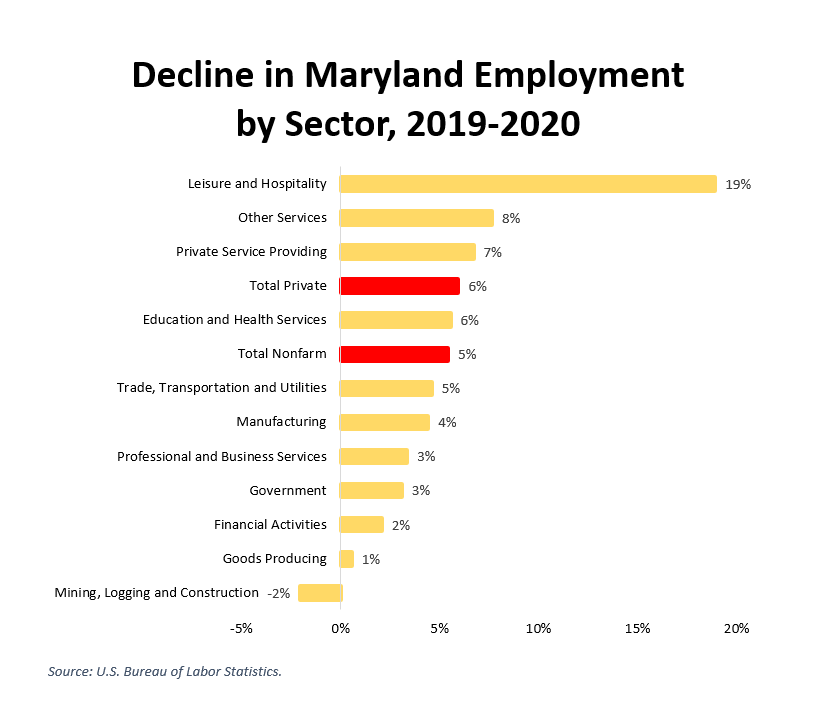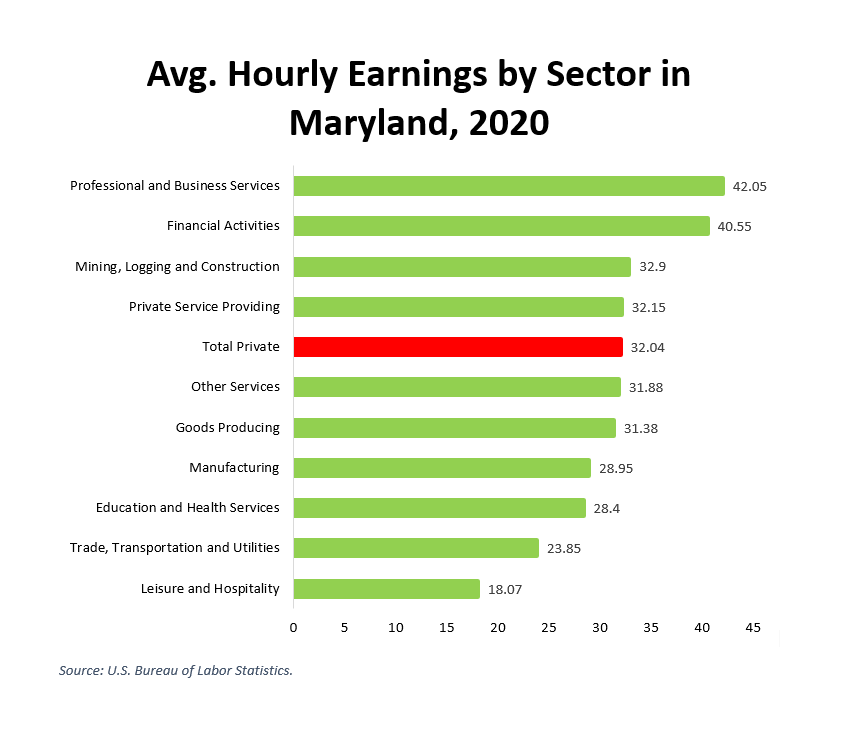By Adam Pagnucco.
In Part One, we recited a central lesson from Economics 101: wages are prices affected by supply and demand for labor. In prior recessions, wages either stagnated or fell – a result we would expect as jobs declined and hiring opportunities fell short of available workers. However, the COVID recession has seen one of the biggest average wage increases in the last half century.
Why?
One key to understanding this is to examine how the COVID recession has impacted specific industries. The chart below shows the decline in employment from 2019 to 2020 by industrial sector in Maryland. (Data for December 2020 is preliminary, which may have a minimal impact on the final results due from the U.S. Bureau of Labor Statistics in a month or two.)

Every industrial sector in Maryland has lost jobs in 2020 except for mining, logging and construction, which actually grew by 2%. This sector is dominated by construction and employers in that industry were likely building a lot of projects that were approved before the pandemic or in its early stages. The sector that took the biggest hit by far was leisure and hospitality, which is comprised of hotels, motels, restaurants, bars, casinos, museums, performing arts, sports and related industries. That makes sense. These industries were among the most affected by health restrictions and they have suffered mightily from declines in travel and tourism.
Now let’s look at the average hourly earnings in these sectors in 2020.

Leisure and hospitality, which had by far the biggest job hit, was also the lowest paying sector in Maryland. When the lowest paying sector loses the greatest percentage of jobs, it skews the overall distribution of wages upward, thereby increasing the average. Also contributing to this skew is that financial activities and professional and business services, the two highest paying sectors, had below average rates of job loss. The jobs that are being lost are disproportionately in lower paying industries. That’s one reason why average wages are rising in the COVID recession unlike in earlier recessions.
But industrial impact is not the only factor behind what’s going on. We will have more in Part Three.
